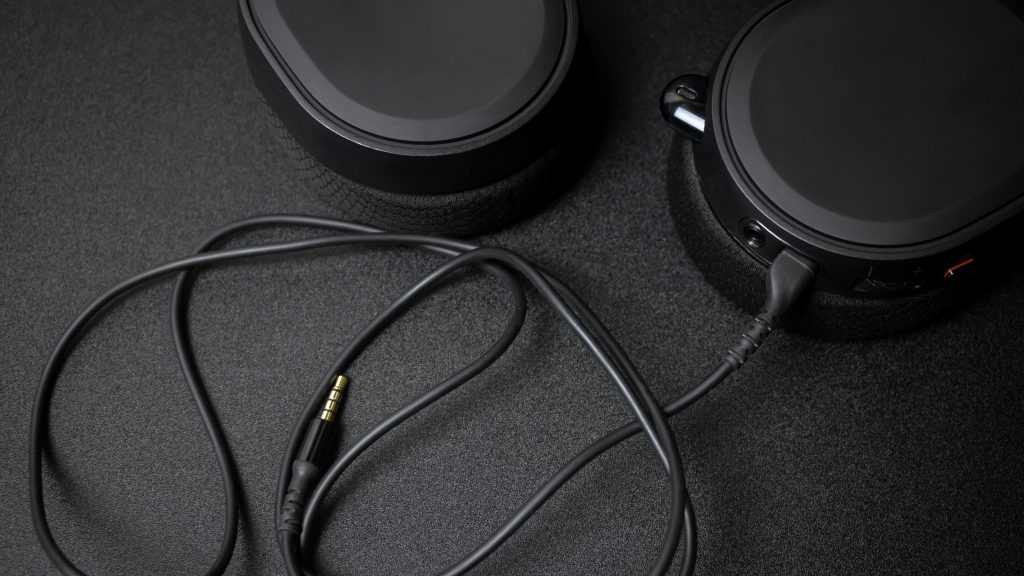The modern luxury automobile industry is witnessing one of its most significant changes. This change combines luxury craftsmanship developed over centuries and the use of innovations such as Artificial Intelligence (AI) and sophisticated digital technologies in manufacturing. Unlike discerning customers who demanded extreme performance and beautiful design in the past, modern consumers expect extreme personalization and deep sustainability intertwined with effortless connectivity. Each step in the process of creating a vehicle, which begins with sketching and concludes with assembly, has to be innovative. The latest luxury cars are equipped with emotion and art alongside precision engineering. It is not uncommon for their cabins to be reminiscent of a lavish lounge or an elite banger casino app, where one is welcomed with jaw-dropping details meant to please and entertain. The ensuing sections discuss the recent research of ten most important changes that are concentrating on redefining alerting the world on how one builds and experiences luxury automobiles in the 21st century along with their practical applications and the technical aspects.
Future Research of Luxury Automobiles Summary
|
Innovative Feature |
Technological Foundations |
Key Advantages |
|
Combining Digital Twins |
IoT, Real-time simulation |
Validation virtually, rapid prototyping |
|
Optimization by AI Design |
Exploratory materials aesthetics |
Generative design algorithms |
|
Component Additive Manufacturing |
3D printing of polymer and metal |
Quicker lead times, more intricate shapes |
|
Advanced composites materials and Bio |
Nanocellulose, carbon fiber |
Strength, low weight, sustainability |
|
Precision autonomous assembly robots |
Flexibility in production, micron accuracy |
Collaborative robots (cobots) |
|
Smart Manufacturing IoT Operated and Edge AI |
Sensor networks, edge computing |
Control of quality, maintenance predictive |
|
Personalized customization of cabins |
Machine Learning, Modular design |
Ergonomics tailored, comfort heightened |
|
Blockchain-secured supply chain |
Sourcing that’s ethical, provenance tracking |
Distributed ledger technology |
|
For production, augmented reality |
Lower error rates, guidance in real time |
Visual AR overlays, headsets |
|
Quantum-advanced simulation and testing |
Models of quantum computing |
Standard testing models of materials prediction at ultra-fast speeds |
Performance Forecasting Simulations Combining Digital Twins
With the purpose of monitoring and performance controlling vehicles, case studies of digital twins are used to create virtual replicas. They integrate engines, chassis assemblies, paint shops into vehicles and mass production line replicas. Each component is affixed with an IoT sensor allowing it to communicate and stream its real-time statistics (numerical) to dedicated high fidelity simulators. These simulators are equipped with predictive features enabling them to compute performance under simulation-iterations.
This function enhances the development cycles, minimizes costs associated with prototyping, and enables fine-tuning performance metrics after production process has been completed. In addition, digital twins facilitate continued monitoring of vehicle health and enables both manufacturers and owners to optimize maintenance schedules depending on how the vehicle is actually used as opposed to set time intervals.
Optimizing Designs Using AI
Generative design utilizes algorithms powered by AI, often relying on CAD based on topology optimization or evolutionary computation, to analyze a multitude of designs, running into the upper-thousands within certain performance and manufacturing boundaries. Designers set forth goal-markers, whether it be weight, stiffness, or airflow, to be met and let software craft LBDs (lattice-based design); forms that would not be possible from traditional CAD. In luxury applications, this signifies more complex arrangements of grilles, supports that are lighter in weight, and controls made custom for the user’s body. AI to support tools can also evaluate design inventories and designs that the clients have had in the past and recommend certain color combinations for trims or how the interior will be arranged that is most likely to please the intended audience. This leads to highly efficient components and distinctive motifs at the same time.
Additive Manufacturing of Components
3D printing technologies have advanced from the realm of just prototyping to now include manufacturing end components at the same time—and often referred to as “additive manufacturing”. Metal powders such as titanium, aluminum, and stainless steel, as well as high polymers, are melted using a laser or electron beam, and fused one layer at a time. These include internal cooling passages for brake caliper housings and advanced lattice geometries for seat frame vertebrae. Through the process of custom printing, bespoke parts or unique custom models can be made with reduced inventory and turnaround time. Enhanced recycling methods for unused powder, along with more effective approaches for constructing parts, have increased competitiveness in material waste, cycle times, and costs—even for lavish, low-volume custom components.
Composites and Bio-Based Materials
Luxury cars require Bio-Based materials that are often lightweight and are multifunctional as they serve a mechanics purpose while also focusing on aesthetics. Carbon fiber reinforced polymers remain essential in the high-performance segments, but sustainable alternatives are evolving with nanocellulose and bio-resins. Plant sourced fibers within bio-epoxy matrices offer competitive tensile strengths while reducing carbon emissions. Carbon bound hemp or flax composites yield distinct aesthetic textures and are fully recyclable at the end of life. In addition to enriching the automobile’s interior, the materials enable acoustic damping within the cabins. Advanced weave patterns produced through automated fiber placement machines and robotic assembly result in consistent quality of component fabrication and deliver reduced manual workflows for meticulous part assembly.
Self-Operating Robots for Accurate Assembly Tasks
Emerging technologies such as collaborative robots (“cobots”) are making assembly tasks easier to perform. In contrast to industrial robots, which operate in safety cages, cobots aid human operators in demanding tasks like torque-controlled bolt fastening, glass panel alignment, or intricate fitting of the components in the interior trims. Computerized machine vision cameras direct the end effectors to adjust to part variance to ensure perfect gaps between the panels and flawless finishing. Changes in the work steps can be easily accomplished by demonstration through user-friendly programming interfaces—adaptive reconfiguration can be achieved for special edition runs or low volume custom models. The combination of human supervision and automated robotic systems enhances the quality of products while increasing efficiency in mass manufacturing.
Intelligent Manufacturing With IOT Technology And Edge AI
The integration of edge analytics and AI with IoT enables real-time control and monitoring of machines (including presses, welders, and paint booths) through the deployment of an intricate spatial distribution of sensor networks. Devices that are equipped with AI can inform operators, or modify the processes themselves, based on temperature increases, lubricant aging, and other normal vibrations within the systems. Algorithms for predictive maintenance analyze a machine’s operational history to estimate and anticipate part failure, and schedule maintenance for times designed to avoid operational interruptions. Vision systems can also detect and flag surface-level defects or misalignment at the fastest possible operational speeds, which allows the achievement of a zero-defect philosophy during production shifts. Improved energy consumption and overall equipment effectiveness are made possible with a connected ecosystem.
Tailoring the Cabin to Individual Owner’s Preferences
The personalization of the vehicle begins with the integration of machine learning, which is now using boarding pass biometrics, that is, historical seating positions, specific steering torque, thermostat usage, climate control preferences, externally registered temperature, and topological arrangement of routes to optimize preset cabin configurations. Mobile applications and onboard systems with touch screen interfaces allow users to select combinations of various illumination styles along with panel and trim insert colors. AI is capable of suggesting optimal seating posture for relax or wellness modes during vehicular movement, recalibrating in-car wellness settings in alignment with these modes. Stress biometrics further enhance algorithmic recalculations of seat posture. Voice interfaces and haptic touch surfaces, amongst other applied responsive controls, facilitate actively driven control elements which enable granular adjustments to be made, further augmenting customization. This enhances the satisfaction of the customer engaging and interacting with the vehicle while deepening brand perception amongst those who demand elaborateness and exclusivity.
Manipulation Protection from Blockchain Technology
Manufacturers of luxury vehicles source materials such as exquisite leather, ethically sourced metal ores, or specialty carbon fiber from a wide range of suppliers. Each part, starting from its source to its final assembly, has traceability through blockchain technology. Every batch of raw materials is tokenized at the point of harvesting or production, placing metadata that confirms environmentally sustainable practices, humane labor, and the conditions under which the item was transported. Smart contracts ensure compliance with agreements made by the suppliers. Documents related to the enhancing the economic and environmental sustainability of crafting professions, labor, transport, and geofencing are mandatory to prove compliance before payment is remitted. The policies enable participants in the circular social and economic sustainable ownership and control over materials through verifying recyclability and remanufacturing pathways at end-of-life, responsible origins, and guaranteed verifies.
Augmented Reality (AR) Works Wonders In the Production Sector
Through AR tablets and headsets, interactive digital manuals are tailored to the specific mechanical assemblages aiding a technician on difficult tasks like routing a wiring harness or calibrating driver-assist sensors. Complex interactivity is provided by 3D highlights as parts, inspection checkambles, and torque values complete and are highlighted. In training, novice workers can practice assembly steps within simulators in AR. This enables a skill-based completely error-free environment minimizing cost and time spent onboard into the real world. Serving the needs of Montgomery Ward, AR assists after-sales service maintenance technicians and dealerships diagnosing under-hood components with cutaway views of the components displaying superimposed diagnostic data or step-by-step repair flow charts which improve quality and efficiency in the provided service.
Quantum-Enhanced Simulation and Testing
Despite its various shortcomings, with the inclusion of quantum computing, it is now possible to accelerate the simulations of highly sophisticated sub-components vital to the luxury car ecosystem. Quantum computing algorithms like the variational quantum eigensolver improve simulations of molecular interactions of new lubricant formulations, the batteries, the electrolytes, and even quantum annealers that do powertrain calibration tradeoff optimization for emissions, efficiency, and performance. Advanced modern constructions with growing error dissolution rates and scaling of quantum hardware stand to gain significantly with diminished R&D cycle times opening casters for system discovery and optimization beyond the realms of classical supercomputers for multi-resource demanding computations.
Conclusion: Remodeling Stellen Motors – From Artisan Craft Driving to the Next Wave of Luxury Automobiles
An era ripe for innovation and new opportunities is being carved by the intersection of luxury automotive engineering craftsmanship and AI’s capabilities. Algorithms, according to recent studies, not only design but also validate models via digital twins. Additionally, devices are enhanced with bio-based composites, computer science, algorithmic bias, and blockchain which increases their personalization, making them smarter than ever. The economy with quality and customer satisfaction, ecological awareness, and sustainable business practices and economic benefits will surge forward when autonomous assembly and smart factories with reactor quantum simulation are adopted. With these ten innovations, the contours and interfaces of future luxury vehicles will be shaped, alongside every form of digital engagement and human imagination, technology, and precision.





















